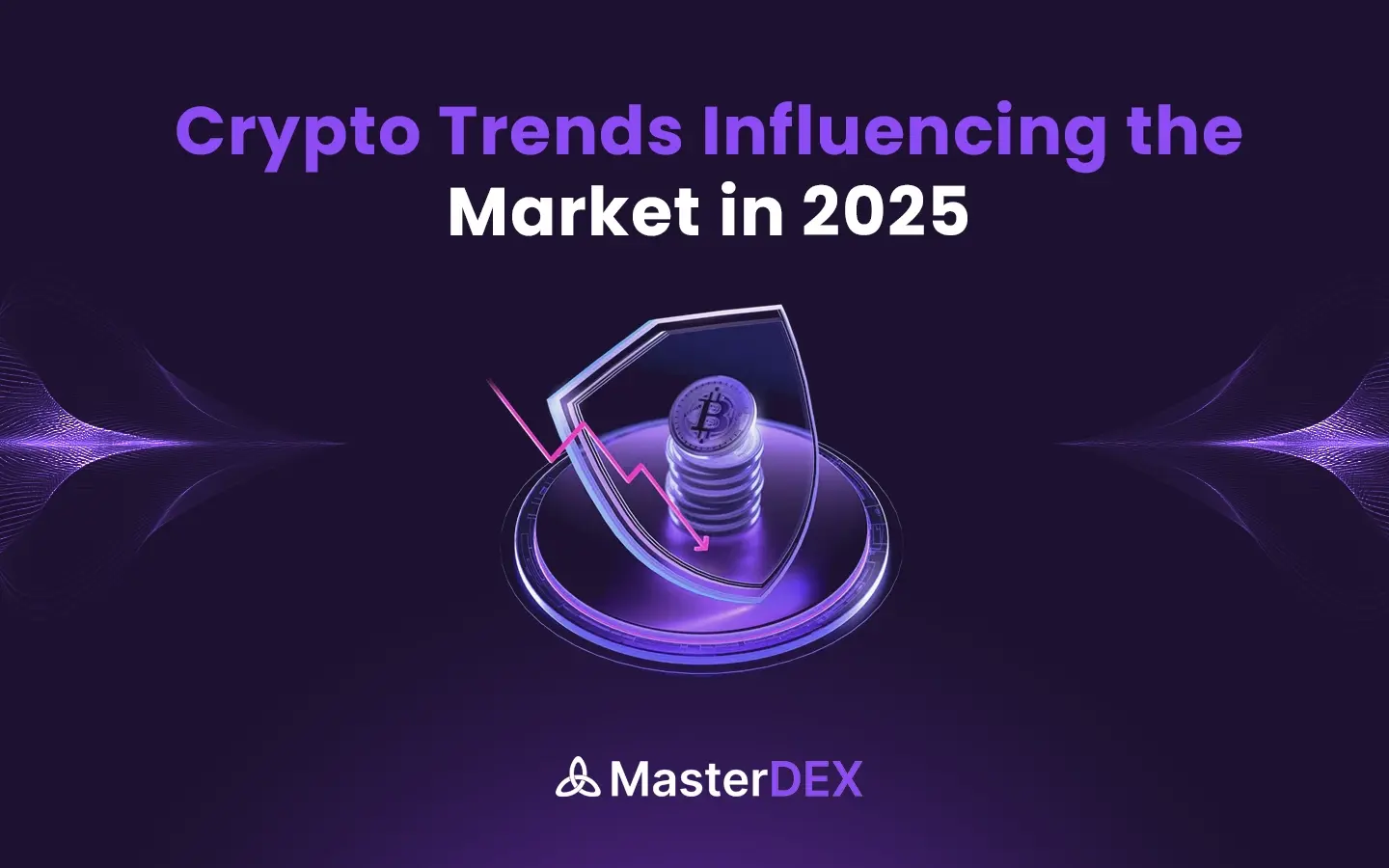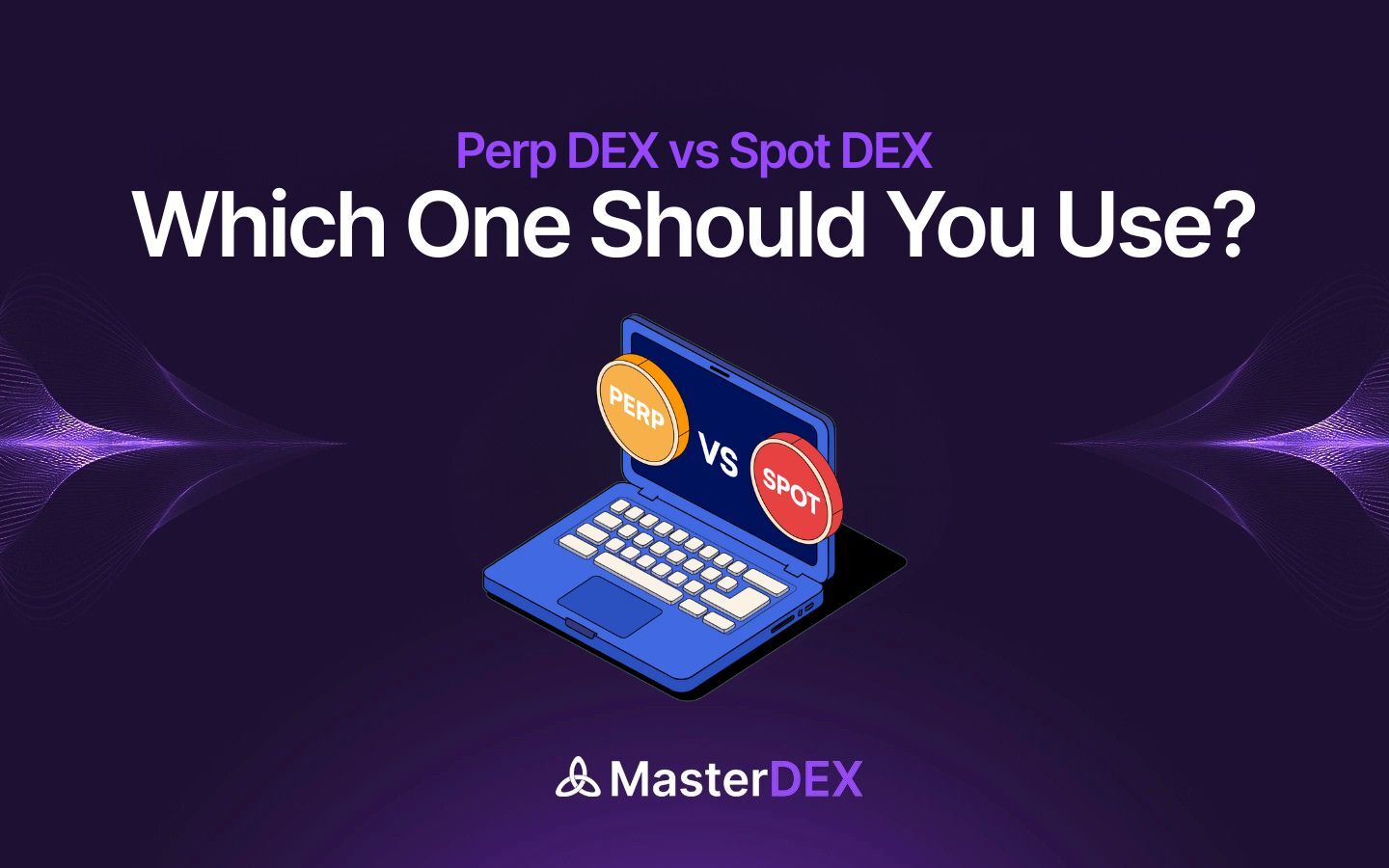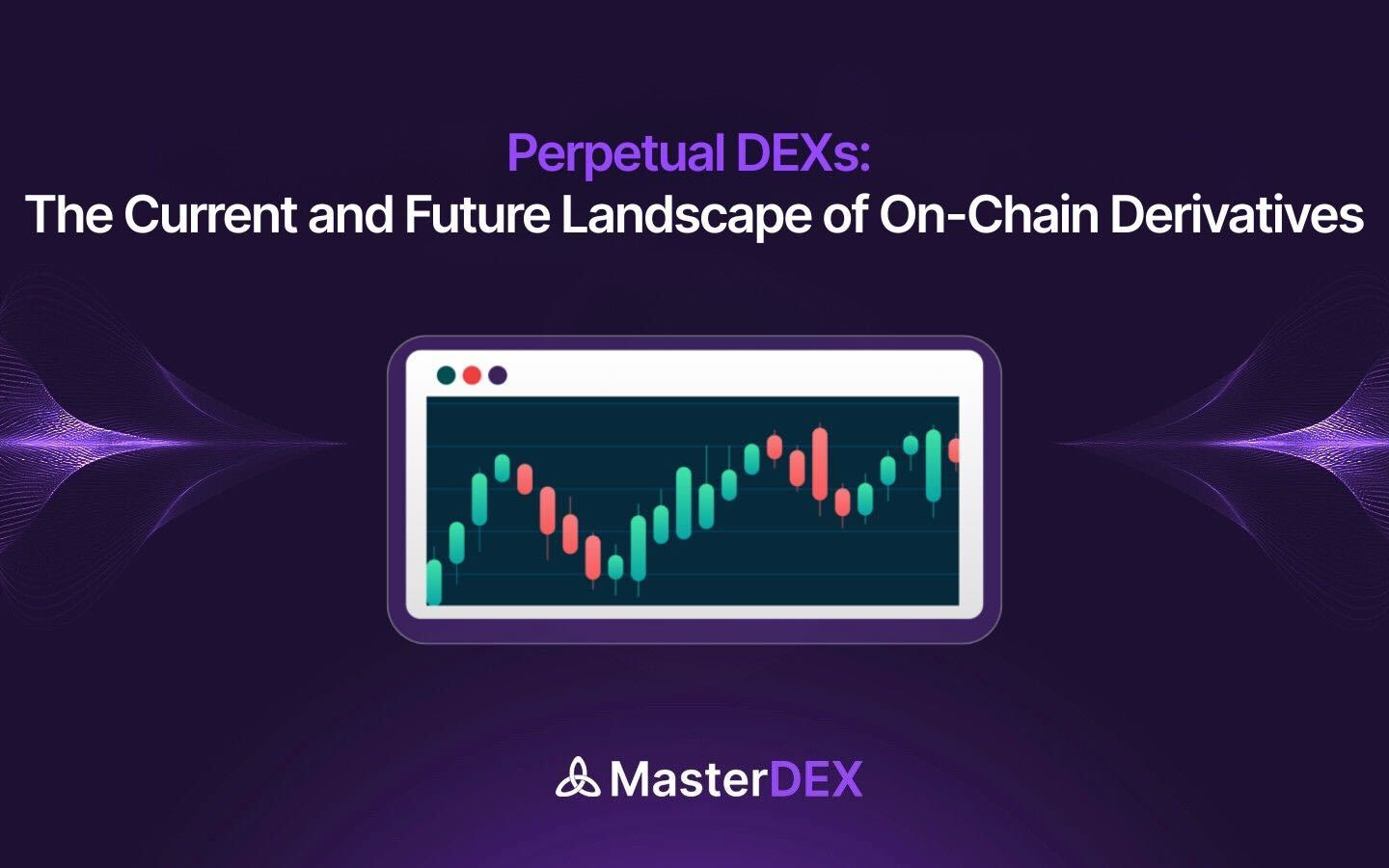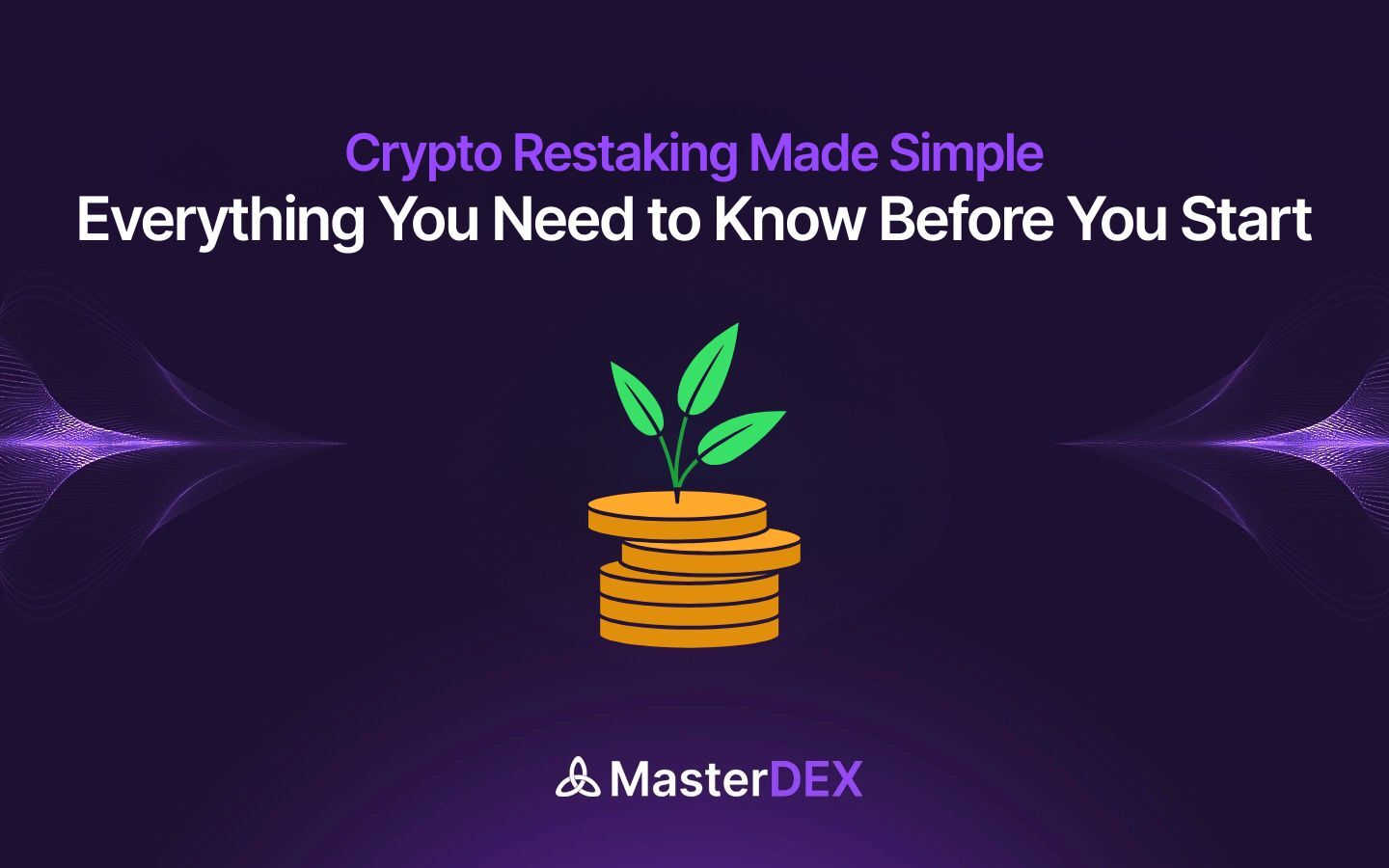The cryptocurrency landscape in 2025 is being shaped by both the echoes of past innovation and the fresh momentum of technological progress. After years of explosive growth, painful corrections, and regulatory confrontations, the industry is entering a more mature and complex phase. Institutional adoption, macroeconomic shifts, AI-driven breakthroughs, and increasing global regulation have laid the foundation for a new era of digital finance.
But which trends are actually steering the market today? Which ones are fads, and which signal long-term transformation?
Table of Contents:
ToggleKey Crypto Innovations Shaping the Market in 2025
In this article, we’ll explore seven major crypto trends that are redefining the space in 2025, shifting investor behavior, revolutionizing technology, and influencing how blockchain integrates into the broader global economy.
Regulatory Clarity Enhances Market Confidence
The first crypto trend that is influencing the crypto market is regulatory confidence. After years of legal ambiguity and fear-driven headlines, several jurisdictions, most notably the European Union, United Arab Emirates, Singapore, and Switzerland have implemented structured, transparent frameworks for digital assets.
In particular, Europe’s Markets in Crypto-Assets Regulation (MiCA) has set a benchmark for how regulators can encourage innovation while protecting consumers. In the U.S., despite ongoing debates between the SEC and crypto firms, regulatory pathways for stablecoins, centralized exchanges, and even decentralized finance protocols have begun to emerge.
This evolving clarity has had a pronounced effect on market confidence. Institutional capital, which once hesitated due to compliance concerns, is now flowing into regulated products and blockchain infrastructure. Custodial services, licensed exchanges, and tokenized securities have gained traction with banks and hedge funds. Meanwhile, retail investors benefit from greater protections, audited disclosures, and improved transparency.
We’re also seeing a rise in jurisdiction-specific licenses like Dubai’s VARA licensing framework and Singapore’s Payment Services Act, both of which offer tailored routes for compliant crypto service providers. These frameworks help reduce uncertainty, encouraging long-term commitments from investors and businesses alike.
In this environment, projects that embrace compliance and governance are gaining an edge, while regulatory arbitrage is becoming less viable. The new rulebook isn’t just about control, it’s about creating long-term viability.
AI Integration Revolutionizes Crypto Operations
Another crucial crypto trend that is influencing the crypto market is the convergence of AI with Blockchain. AI and blockchain have long been discussed in parallel, but 2025 marks the year their convergence began reshaping real-world use cases.
From advanced trading algorithms to on-chain fraud detection and wallet behavior analysis, AI is now embedded in the infrastructure of many crypto platforms. Projects like Numerai use AI to crowdsource and model hedge fund strategies, while Fetch.ai provides autonomous agents for DeFi services.
Language models integrated into dApps are helping onboard new users by offering conversational interfaces that eliminate technical friction. Portfolio optimization tools and robo-advisors powered by AI are offering tailored suggestions for users based on historical data, tax efficiency, and risk profiles.
Security-wise, AI tools are identifying suspicious on-chain activity and triggering safeguards before exploits occur. This real-time monitoring is crucial as DeFi platforms become increasingly composable and complex.
The flip side? Ethical concerns about surveillance, data privacy, and the black-box nature of certain AI models remain unresolved. But for now, AI is dramatically enhancing the scalability, intelligence, and accessibility of crypto ecosystems.
Tokenization of Real-World Assets Gains Traction
One of the most groundbreaking shifts in 2025 is the accelerated tokenization of real-world assets (RWAs). While the idea of bringing physical assets on-chain has existed for years, it’s now reaching mainstream viability.
Real estate, gold, fine art, intellectual property, carbon credits, and even freight invoices are being represented as blockchain-based tokens. These tokens are divisible, tradable, and globally accessible, offering a level of liquidity that traditional markets could never achieve.
Major financial players like BlackRock and Franklin Templeton have also launched tokenized funds, proving that the movement is not restricted to startups. JPMorgan’s Onyx platform facilitates tokenized repo agreements and treasury services, showcasing the institutional interest in this space.
Platforms like Tiamonds (tokenized diamonds), RealT (real estate), and Ondo Finance (treasuries and bonds) exemplify this movement. Additionally, regulated exchanges now support asset-backed tokens under security token frameworks, which meet AML and KYC requirements.
For institutions, RWA tokenization allows for instant settlement, 24/7 trading, and streamlined auditing. For retail investors, it unlocks access to formerly exclusive markets.
However, RWA success hinges on trusted oracles, legal enforceability, and custodial standards. The projects solving these backend challenges are emerging as the key infrastructure providers for a trillion-dollar opportunity.
DeFi Matures Beyond Yield Farming
Decentralized finance in 2025 has evolved well beyond the speculative boom of yield farming and liquidity mining. What once felt like an experimental sandbox now resembles a parallel financial system, complete with credit markets, risk management frameworks, and institutional-grade products.
Protocols are integrating RWAs, launching compliant versions of lending platforms, and adopting real-time auditing. Liquid staking derivatives (LSDs), decentralized perpetual exchanges, and DAO-run treasuries are providing real revenue and utility beyond emissions.
Moreover, multichain liquidity and Layer 2 scaling solutions have eliminated many of the gas fee and slippage problems that once hampered DeFi adoption. Platforms like Aave, Maker, and Frax are rolling out features tailored to institutions such as permissioned pools, KYC layers, and fixed-rate lending.
Notably, DeFi credit scores and undercollateralized lending models are gaining traction, especially in emerging markets. These innovations aim to bring more real-world economic activity onto permissionless rails.
The risks still exist, smart contract bugs, governance attacks, and liquidity fragmentation, but the conversation has shifted from “Is DeFi real?” to “How can it be improved?”
Blockchain Gaming and the Metaverse Expand
Crypto gaming, often dubbed “GameFi,” is no longer in its infancy. In 2025, blockchain-based games are not only attracting millions of users, but they are also redefining digital ownership and entertainment economics.
Titles like Illuvium, Big Time, and Shrapnel have shown that blockchain gaming can combine AAA-quality graphics with real asset ownership. Players now trade NFTs representing characters, gear, land, and achievements, building economies that blur the line between work and play.
The metaverse, while not as hyped as in 2021, is evolving in more practical ways. Instead of fully immersive VR experiences, users now engage with interoperable avatars, digital collectibles, and virtual events tied to real-world assets and brands.
Blockchain integration in these ecosystems enables verifiable scarcity, cross-platform trading, and creator royalties. Meanwhile, Layer 2 scaling and account abstraction have made onboarding seamless.
Gaming guilds and play-to-earn economies have stabilized, now focusing on sustainability rather than speculative spikes. Hybrid monetization models that balance in-game purchases and player earnings are being adopted widely.
Critics may argue that not all users want asset ownership in games. But the growing number of hybrid models suggests that choice, not ideology, is driving adoption.
Memecoins Capture Retail Investor Interest
Despite their volatility and often questionable fundamentals, memecoins remain a significant force in 2025. From DOGE and SHIB to newer entrants like PEPE, MOG, and FLOKI, these tokens thrive on culture, community, and virality more than utility.
So why are they relevant?
Memecoins often act as gateways for new users entering the crypto space. Their humor, relatability, and low-cost appeal draw in retail investors who later explore deeper parts of the ecosystem. In some cases, memecoins evolve into more structured DAOs or adopt staking, NFT integrations, and treasury mechanisms.
Communities behind these tokens are incredibly active, often driving real-world marketing campaigns, exchange listings, and even philanthropy. MOG, for example, has gained traction by merging internet meme culture with consistent developer updates and community grants.
While speculative by nature, their influence on sentiment, on-chain activity, and liquidity cycles cannot be dismissed.
In a way, memecoins reflect the decentralized, permissionless spirit of crypto that anyone can create, buy, and build. But their success also reveals the power of storytelling and branding in Web3.
Central Bank Digital Currencies (CBDCs) on the Rise
Another crypto trend that cant be overlooked is the rise of CBDCs. As traditional governments catch up to digital innovation, central bank digital currencies (CBDCs) are emerging as a prominent theme in 2025.
Dozens of countries have launched pilot programs or full-scale rollouts of CBDCs. China’s digital yuan continues to expand, while the European Central Bank and Bank of Japan are in advanced testing phases. Even the U.S. is exploring a digital dollar via interagency research and private-sector consultations.
Nigeria, India, and Brazil have each tested their own CBDC models with varying levels of integration into public payment systems. These early deployments offer valuable case studies for how digital fiat might scale.
CBDCs aim to offer the benefits of digital payments, such as speed, traceability, and cost-efficiency, without the volatility of cryptocurrencies. They can facilitate faster settlements, cross-border remittances, and more effective monetary policy.
However, critics warn of potential downsides: privacy erosion, programmability that limits freedom, and the displacement of cash.
CBDCs may not be “crypto” in the ideological sense, but their development validates the underlying blockchain model. They also push the envelope for wallets, digital identity, and payment infrastructure worldwide.
Cross-Chain Interoperability Redefining Blockchain Usability
A growing crypto trend in 2025 is the increasing importance of interoperability between blockchain networks. In a multichain world, users don’t want to be locked into isolated ecosystems. Projects like LayerZero, Axelar, Wormhole, and Chainlink CCIP are building the bridges that make seamless cross-chain communication possible.
These protocols enable asset transfers, smart contract execution, and data flow between different Layer 1 and Layer 2 chains. For example, users can now move stablecoins from Ethereum to Avalanche or Solana without relying on centralized exchanges.
Interoperability not only enhances user experience but also boosts liquidity and reduces fragmentation. Developers can now build applications that tap into liquidity from multiple chains simultaneously, making DeFi more robust and accessible.
This trend is fundamental to scaling the next generation of dApps, especially in areas like gaming, NFTs, and cross-border finance.
FAQs
- What’s the biggest crypto trend of 2025?
Regulatory clarity is perhaps the most impactful trend, enabling institutional adoption and setting the stage for mainstream growth.
- Are CBDCs a threat to decentralized crypto?
Not necessarily. While CBDCs increase competition, they also validate blockchain’s utility and push infrastructure innovation. However, privacy concerns remain.
- How is AI really used in crypto today?
AI powers fraud detection, trading algorithms, portfolio optimization, and conversational interfaces in dApps. It’s helping both platforms and users operate smarter and faster.
Final Thoughts
The crypto industry in 2025 is no longer a speculative playground. It is a multifaceted, dynamic ecosystem that influences every corner of finance, technology, and culture. The trends outlined in this article represent the tip of a much larger iceberg. From the institutional embrace of regulation to the retail energy behind meme coins, from AI-powered infrastructure to real-world asset tokenization, each trend is not only reshaping crypto but also being shaped by it. For builders, these trends offer blueprints. For investors, they highlight emerging narratives. For regulators, they represent both a challenge and an opportunity.
As always, the most successful participants in crypto will be those who combine technical knowledge with strategic foresight, those who not only observe trends but help set them.



